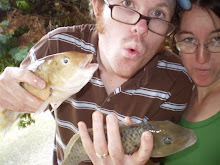The Indian House Crow is an invasive pest along coastal Kenya. Introduced to Zanzibar Island, Tanzania to take care of the smelly rubbish, it not only competes with the native Pied Crow, it also eats crops, attacks and kills farm animals and is known to carry eight human diseases.
Up until 2005, a house crow control program was running in Malindi and Watamu to keep their numbers down through very selective poisoning. The crows were killed with bait poisoned with Starlicide, a poison that when consumed by the bird is metabolised to safe by-products prior to death about 12 hours later. The poisoning was strictly supervised resulting in the death of only a couple dogs and a half-dozen Pied Crows alongside the tens of thousands of house crows.
The poison was imported from the USA with permission of the Kenya Wildlife Service. However, after 9/11 the rules tightened and import required extra permission, which the Pest Control Product Board has refused to date.
Since then, their numbers have skyrocketed from double figures in Malindi in 2005 to over 3000 recorded across two sites this past month.
 |
| Hundreds of Indian House Crows can swoop past in one go. |
A Rocha Kenya is continuing to collect crow data and letters of complaint from the general public as it builds its case to bring before the Pest Control Product Board.
Anna and I have been on many of the monthly full moon crow counts. We have clambered on many roofs to count the crows as they come home to roost whilst enjoying the sunset and majestic moonrise. Sometimes we were treated to huge fruit bats flying out to feed or a bat hawk on the hunt for dinner.
 |
| I see a full moon rising |
A highlight of these trips was dinner at Zanzibar café. A great feed of chapatti, beans and mchicha (African spinach) with a soda for under two dollars. YUM!!!
 |
| Classic Swahili tucker |
After filling up we go for a wee walk out at the Sabaki River Mouth, dodging the roaming hippos that are sometimes too close for comfort. Each trip, we enjoyed a revitalising and refreshing mud bath as we slipped and slid our way out to the waters edge. Near the river mouth, ‘we’ (more like Colin and Albert) estimate the number of terns roosting on the flats. We regularly got numbers exceeding 30,000 but never as high as the ~500,000 the estimated in January 2009. Nothing like birding adventures in the moonlight.
 |
| Moonlighting |








No comments:
Post a Comment